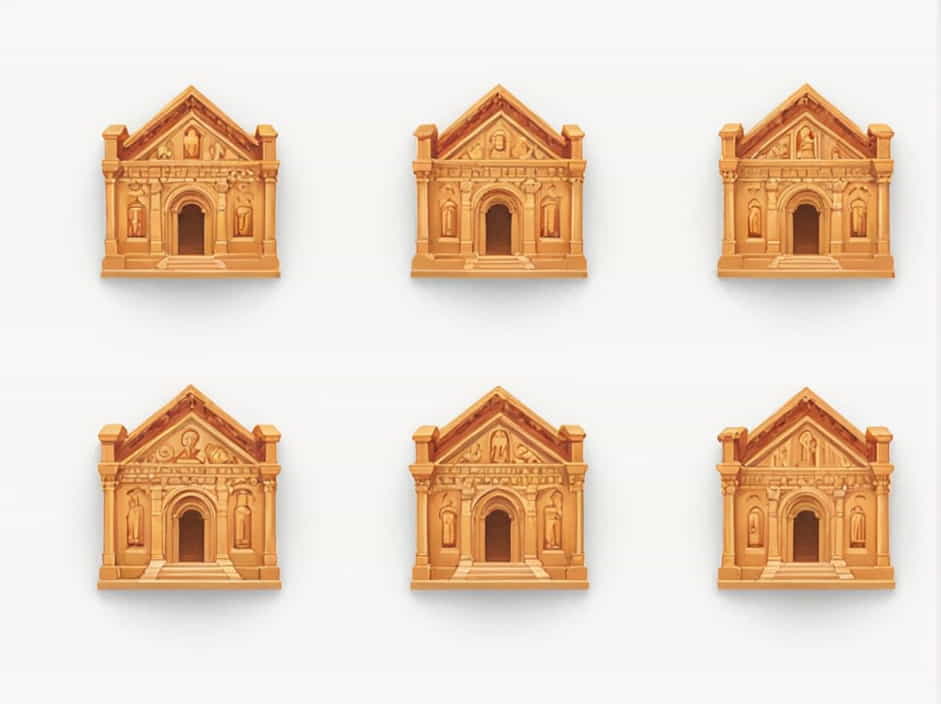Romanesque architecture emerged in Europe between the 10th and 12th centuries, serving as a bridge between ancient Roman and Gothic architectural styles. It was characterized by thick walls, rounded arches, and massive structures, reflecting a focus on durability and stability. This architectural style was primarily used in churches, monasteries, and castles, creating a distinct medieval aesthetic.
This topic explores the key architectural elements utilized in Romanesque architecture, their significance, and how they contributed to the development of later architectural styles.
Key Features of Romanesque Architecture
1. Rounded Arches
One of the defining characteristics of Romanesque architecture is the rounded arch, inspired by ancient Roman structures. These arches were used in doors, windows, and arcades, providing structural strength and a classic aesthetic. The rounded arch was later adapted into pointed arches in Gothic architecture.
2. Thick Stone Walls
Romanesque buildings were constructed with thick stone walls, often several feet deep. These walls provided support for heavy stone roofs and enhanced defense against attacks, particularly in castles and fortified churches. The massive walls also helped regulate indoor temperatures, keeping interiors cool in summer and warm in winter.
3. Barrel Vaults
A barrel vault is a continuous series of arches forming a tunnel-like ceiling. Romanesque churches frequently used stone barrel vaults to replace the wooden roofs of earlier basilicas. These vaults improved fire resistance and added an element of grandeur to church interiors.
4. Groin Vaults
A groin vault is created by the intersection of two barrel vaults, forming a more complex and visually appealing ceiling structure. This innovation allowed architects to create larger open spaces and distribute weight more efficiently, paving the way for Gothic ribbed vaulting in later centuries.
5. Small, Narrow Windows
Due to the thickness of Romanesque walls, windows were small and narrow, often resembling slits. These windows limited natural light, creating dimly lit interiors that contributed to a sense of mystery and spirituality. Stained glass windows were introduced later but remained simple compared to the elaborate designs of Gothic cathedrals.
6. Decorative Arcading
Arcading—a series of arches supported by columns or piers—was commonly used for decoration. Romanesque arcades were typically simple and repetitive, adding rhythm and structure to church façades and cloisters.
7. Massive Towers
Many Romanesque churches featured tall, square towers, often placed at the crossing of the nave and transept or flanking the entrance. These towers served both aesthetic and practical purposes, acting as bell towers and lookout points.
8. Buttresses for Structural Support
Unlike the flying buttresses of Gothic architecture, Romanesque buildings used solid, engaged buttresses that projected from the walls. These buttresses helped distribute weight evenly, reinforcing the stability of thick stone structures.
9. Romanesque Columns and Capitals
Columns in Romanesque buildings were often thick and sturdy, supporting heavy loads. Their capitals (the tops of the columns) were decorated with carved motifs, including:
- Biblical scenes
- Mythological creatures
- Geometric patterns
These intricate carvings added an artistic element to otherwise massive and plain structures.
10. Semi-Circular Apse
Churches in the Romanesque period typically featured a semi-circular apse at the eastern end of the building. This area housed the altar and choir, serving as the focal point of religious ceremonies. The apse was often decorated with frescoes or mosaics, depicting Christ, saints, or biblical narratives.
Influences on Romanesque Architecture
1. Ancient Roman Architecture
The term “Romanesque” itself reflects the strong influence of Roman architecture, particularly in the use of:
- Rounded arches (inspired by Roman aqueducts and basilicas)
- Stone vaulting (adapted from Roman bathhouses)
- Thick walls and strong fortifications (similar to Roman military buildings)
2. Early Christian and Byzantine Styles
Elements such as basilica-style church layouts and decorative mosaics were borrowed from Early Christian and Byzantine traditions, especially in Italy and the Eastern Mediterranean.
3. Carolingian and Ottonian Architecture
The Romanesque style also drew from Carolingian and Ottonian architecture, which revived classical Roman elements while introducing towers, crypts, and intricate metalwork in church design.
Notable Examples of Romanesque Architecture
Several famous Romanesque structures still stand today, showcasing the enduring beauty and strength of this architectural style.
1. Pisa Cathedral, Italy
Part of the Piazza dei Miracoli, the Pisa Cathedral is known for its striped marble façade, rounded arches, and intricate arcading. The adjacent Leaning Tower of Pisa is also an example of Romanesque design.
2. Santiago de Compostela Cathedral, Spain
A major pilgrimage site, this cathedral features barrel vaults, groin vaults, and massive towers, typical of the Romanesque style.
3. Speyer Cathedral, Germany
One of the largest surviving Romanesque churches, Speyer Cathedral is renowned for its massive walls, ribbed vaults, and Roman-inspired sculptures.
4. Durham Cathedral, England
Durham Cathedral is a transitional structure between Romanesque (Norman) and Gothic architecture, featuring rounded arches, thick columns, and early ribbed vaulting.
5. Abbey of Cluny, France
Once the largest church in Europe, Cluny Abbey showcased monumental stone vaults and an impressive nave, influencing later Romanesque and Gothic buildings.
Legacy of Romanesque Architecture
Romanesque architecture laid the foundation for the Gothic style, which emerged in the 12th century. While Gothic architecture introduced pointed arches, larger windows, and flying buttresses, many Romanesque principles—such as strong structural designs and vaulted ceilings—remained influential.
Even today, Romanesque elements are visible in churches, castles, and civic buildings, preserving the legacy of medieval craftsmanship and innovation.
Romanesque architecture played a crucial role in shaping medieval Europe, blending Roman engineering with Christian symbolism. Through its rounded arches, thick walls, and massive towers, this architectural style created majestic, enduring structures that continue to inspire architects and historians.
Whether seen in ancient cathedrals or historic fortresses, Romanesque architecture remains a testament to the artistic and structural brilliance of the medieval era.
